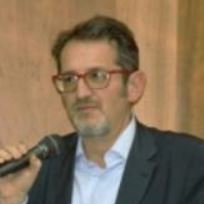Multi-Data Integration in Near-Surface Geophysics and Close Range Remote Sensing Applied to Cultural Heritage
A special issue of Remote Sensing (ISSN 2072-4292). This special issue belongs to the section "Environmental Remote Sensing".
Deadline for manuscript submissions: 26 May 2024 | Viewed by 7979
Special Issue Editors
Interests: GIS; geocomputation; remote sensing; geophysics; cultural heritage; landscape archaeology
Special Issues, Collections and Topics in MDPI journals
Interests: heritage science; remote sensing in archaeology; architectural conservation; archaeological science; humanities
Special Issues, Collections and Topics in MDPI journals
Special Issue Information
Dear Colleagues,
In the last decade, data coming from near-surface geophysics and close-range remote sensing have become fundamental instruments in the field of cultural heritage (CH). In fact, in the literature, it is possible to find different types of study cases and approaches ranging from the detection of archaeological proxy indicators to automatic pattern extraction for applications in diverse cultural heritage assets and features, including historical masonry structures, architectural surfaces and frescoes.
However, even though data integration is a well-established practice for remote sensing applied to CH, concerning near-surface geophysics and close-range remote sensing, this integration often still remains at a basic level, involving just pixel-by-pixel composition or basic analysis.
Nevertheless, today, the analytical toolkits available (from spatial to intelligent analysis) can lead to a deeper and effective multi-data integration, able to improve results and create more effective methods in the application field of cultural heritage
In this Special Issue, contributions presenting relevant analytical approaches for multi-data integration in near-surface geophysics and close-range remote sensing (spatial analysis, spatial autocorrelation application, machine learning, deep learning, cellular automata, and agent-based approaches) in the field of cultural heritage are welcome.
Authors are invited to submit:
- papers showing new or consolidated types of advanced analytical data integration for the different types of cultural heritage;
- reviews of the limitations and advantages of the existing methods in this relevant research field.
Dr. Maria Danese
Prof. Dr. Nicola Masini
Guest Editors
Manuscript Submission Information
Manuscripts should be submitted online at www.mdpi.com by registering and logging in to this website. Once you are registered, click here to go to the submission form. Manuscripts can be submitted until the deadline. All submissions that pass pre-check are peer-reviewed. Accepted papers will be published continuously in the journal (as soon as accepted) and will be listed together on the special issue website. Research articles, review articles as well as short communications are invited. For planned papers, a title and short abstract (about 100 words) can be sent to the Editorial Office for announcement on this website.
Submitted manuscripts should not have been published previously, nor be under consideration for publication elsewhere (except conference proceedings papers). All manuscripts are thoroughly refereed through a single-blind peer-review process. A guide for authors and other relevant information for submission of manuscripts is available on the Instructions for Authors page. Remote Sensing is an international peer-reviewed open access semimonthly journal published by MDPI.
Please visit the Instructions for Authors page before submitting a manuscript. The Article Processing Charge (APC) for publication in this open access journal is 2700 CHF (Swiss Francs). Submitted papers should be well formatted and use good English. Authors may use MDPI's English editing service prior to publication or during author revisions.
Keywords
- near-surface geophysics
- close-range remote sensing
- multi-data integration
- GIS
- spatial analysis
- machine learning
- deep learning
- cultural heritage






